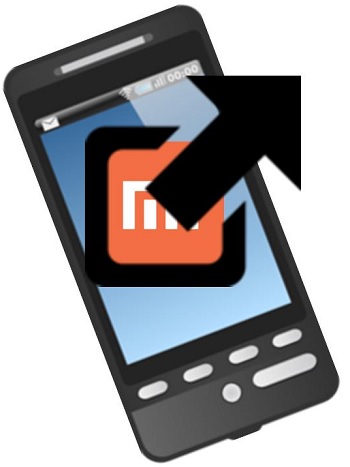The company has experienced massive growth in the country, skyrocketing its size and share.
The founder of Xiaomi, Lei Jun, has already announced that the massive growth that his company has seen in the Chinese smartphone market has not only pushed it to the top in China, but it has also placed it in the fifth spot among the largest handset makers in the world.
This was accomplished despite the fact that the company was still relatively obscure only one year ago.
Now, Xiaomi has taken the lead in cell phone sales in China. This is a massive accomplishment, considering that the country represents the largest smartphone market on the entire globe. A technology research report that was recently published by Canalys underscored the tremendous growth that the company has been making. It has managed to jet right past other giants within the space, such as Lenovo and even Samsung, in order to take its crown in the country.
Due to the sheer size of the Chinese smartphone market, it has secured Xiaomi as the fifth largest cell phone maker in the world.
 The Canalys report went on to say that throughout the second quarter of 2014, Xiaomi managed to ship a tremendous 15 million smartphones within China. During the same quarter of 2013, that figure had been only 4.4 million. To compare, the report showed that Samsung sold 13.2 million cell phones within the country during that quarter, which was a decline from the 15.5 million that it had sold during the same period of time last year.
The Canalys report went on to say that throughout the second quarter of 2014, Xiaomi managed to ship a tremendous 15 million smartphones within China. During the same quarter of 2013, that figure had been only 4.4 million. To compare, the report showed that Samsung sold 13.2 million cell phones within the country during that quarter, which was a decline from the 15.5 million that it had sold during the same period of time last year.
As a whole, there was a 240 percent year over year growth experienced by Xiaomi during the second quarter. It currently holds an estimated 14 percent of the cell phone device market in China.
According to Chris Jones at Canalys, the company managed to make this tremendous progress within this mobile device sector because it took on an entirely different strategy to its competition. The majority of manufacturers in the country’s smartphone market focus on price when it comes to their competition. That said, Xiaomi placed its focus on its marketing, branding and sales strategies.
Wearable devices will be used in new study from the Michael J. Fox Foundation and Intel
Wearable technology may hold some promise when it comes to researching Parkinson’s Disease. The Michael J. Fox Foundation and Intel have teamed together to study how wearable devices could be used to detect data on the various symptoms of the disease. The information will be uploaded into a cloud computer network and this information will be available to researchers for free. Some 60,000 people in the U.S. alone are diagnosed with Parkinson’s Disease every year and understanding this affliction is beginning to become more important.
Mobile technology is beginning to see more practical uses
Mobile technology plays a significant role in society today, but typically only fills entertainment and social needs. Smartphones allow people to stay in constant contact with one another through the Internet and through a mobile network. Beyond that, mobile technology has only very recently begun to see more attention as a way to gather information about certain medical problems and similar issues.
Study aims to help patients keep track of their symptoms more effectively
 Through the study, data concerning the slowness of movement, tremors, and sleep quality of those suffering from Parkinson’s Disease will be collected. Wearable devices may also help patients self-report their symptoms and how these symptoms affect their lives more efficiently. A small-scale study was held earlier this year in which patients used wearable devices to offer up information about their symptoms. Those participating in the study noted that wearable devices kept track of their symptoms more effectively.
Through the study, data concerning the slowness of movement, tremors, and sleep quality of those suffering from Parkinson’s Disease will be collected. Wearable devices may also help patients self-report their symptoms and how these symptoms affect their lives more efficiently. A small-scale study was held earlier this year in which patients used wearable devices to offer up information about their symptoms. Those participating in the study noted that wearable devices kept track of their symptoms more effectively.
Wearable technology has seen little practical use in the past few years, but that may be changing quickly
Wearable technology is gaining popularity, but wearable devices are typically seen as novelty rather than practical tools. Most wearable devices have to do with entertainment in some way, while others exist for social media purposes. There are very few of these devices currently available that represent some practical use. Some smartwatches, for instance, exist that help keep track of health information, but wearable devices have seen little practical use beyond this.
 The Canalys report went on to say that throughout the second quarter of 2014, Xiaomi managed to ship a tremendous 15 million smartphones within China. During the same quarter of 2013, that figure had been only 4.4 million. To compare, the report showed that Samsung sold 13.2 million cell phones within the country during that quarter, which was a decline from the 15.5 million that it had sold during the same period of time last year.
The Canalys report went on to say that throughout the second quarter of 2014, Xiaomi managed to ship a tremendous 15 million smartphones within China. During the same quarter of 2013, that figure had been only 4.4 million. To compare, the report showed that Samsung sold 13.2 million cell phones within the country during that quarter, which was a decline from the 15.5 million that it had sold during the same period of time last year.
 Through the study, data concerning the slowness of movement, tremors, and sleep quality of those suffering from Parkinson’s Disease will be collected. Wearable devices may also help patients self-report their symptoms and how these symptoms affect their lives more efficiently. A small-scale study was held earlier this year in which patients used
Through the study, data concerning the slowness of movement, tremors, and sleep quality of those suffering from Parkinson’s Disease will be collected. Wearable devices may also help patients self-report their symptoms and how these symptoms affect their lives more efficiently. A small-scale study was held earlier this year in which patients used 